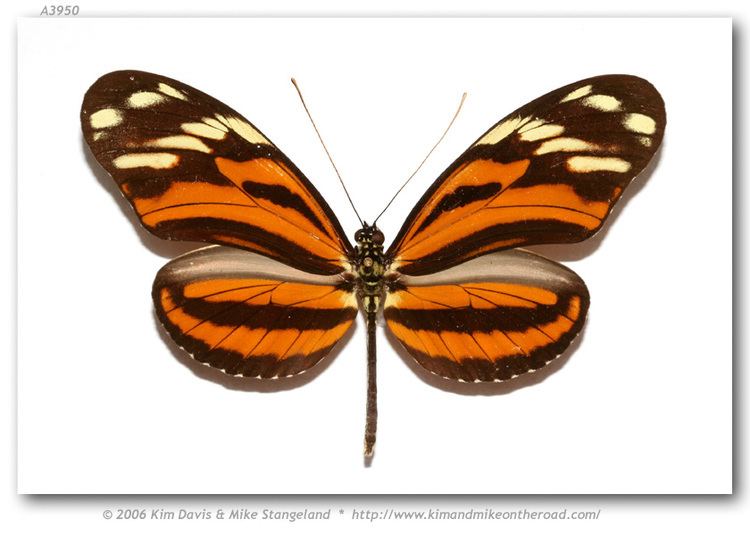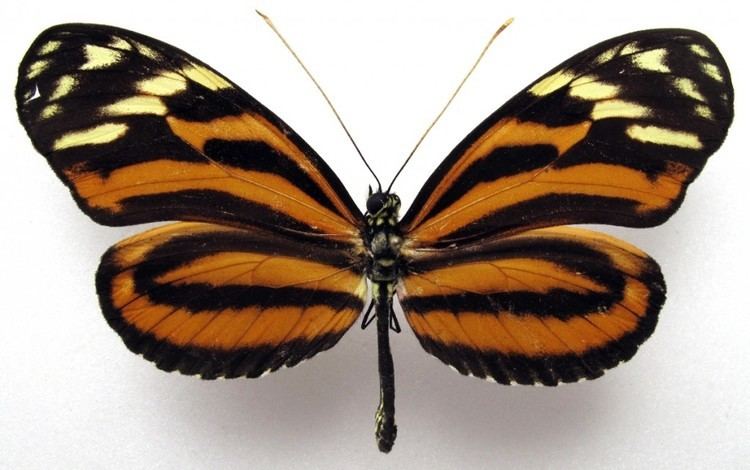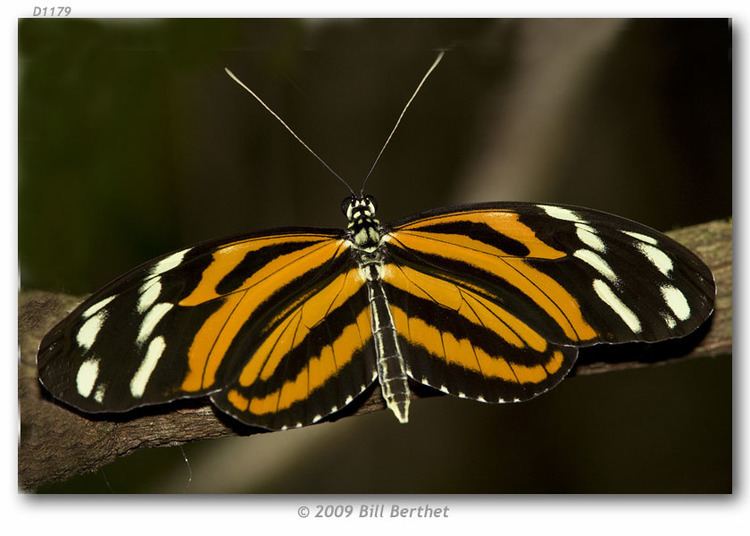Genus Heliconius Rank Subspecies | ||
Similar Heliconius hecale, Heliconius cydno, Heliconius sapho, Heliconius, Sara longwing | ||
Heliconius ismenius, the Ismenius tiger or tiger heliconian, is a butterfly of the Nymphalidae family found in Central America and northern South America. They are highly populous as far south as Ecuador and Venezuela and as far north as southern Mexico, Guatemala and Belize. The H. ismenius are more commonly called the tiger-striped long wing butterfly. The H. ismenius's nickname is blatantly derived from its long butterfly wing structure as well as the beautiful burnt orange and black stripes, which resemble the stripes of a tiger's coat. Pierre André Latreille, a French zoologist, found the Heliconius ismenius in 1817. The H. ismenius is known for being the first individual evidence, other than Charles Darwin's finch research in the Galapagos Islands, for the proof of natural selection, exemplified by Henry Walter Bates.
Contents

Life and characteristics

Like any other butterfly, Heliconius ismenius start as eggs, grow to a larval, caterpillar stage, pupate and then mature into butterflies. The eggs are spread out under separate leaves with the mother only placing one or two eggs in a specific location of the host plant. The eggs are small and yellow approximately 1.3 mm (height) x 0.8 mm (width). As the larvae mature, they become larger, approximately 2 cm in size, and become colored. They have an orange head and anal plate and a white body with black spots all over. According to Beltran, the pupae were observed to have a strong bowed thorax with five pairs of black spine in the abdomen. As well, the pupae are brown in color and contain an average of three gold colored spots on the pupae dorsum. As a grown butterfly the antenna have short black spines all around as well as the short horns on the head.

Heliconius ismenius are known for feeding on specific plants. The plant a specific H. ismenius stays on throughout its lifetime is called a host plant. The host plants popular for H. ismenius are found in subgenera Distephana and genera Granadilla. They feed on Passiflora platyloba, P. ambigua, P. alata, and P. pedata in Costa Rica only.

Throughout the rainforests they are found no higher than 1,500 meters. During the night, it is common that the adults form groups 3 to 10 meters above the ground. These groups are normally located along the forest edges on branches and tendrils of the host plants and trees.
Henry Walter Bates

In 1848, English naturalist Henry Walter Bates was studying insects in the Amazon when he found that one butterfly was mimicking the looks of another butterfly, solely to reap the protection of the other butterfly's looks. The butterfly that was being copied was known as the Heliconius ismenius. The H. ismenius was being copied by Melinaea lilis messatis, the mimic tigerwing. The H. ismenius are toxic and non-palatable to predators. They exemplify this by showing beautiful orange and black tiger stripes along their long wings. Predators remember these colors and patterns very quickly when they eat one of these butterflies, which make these warning colors quite desirable by other butterflies. Now, although the pierids were palatable, they, as Bates would say, were the "mockers" mimicking the H. ismenius to better their survival. This study showed natural selection at its finest and was brought back by Bates just months after Charles Darwin published On the Origin of Species. This really showed a good example of behavioral ecology in the fact that the pierids mimicked the behavior of the H. ismenius to better their chances of survival. This mimicking is a common concept studied in ecology and more specifically, behavioral ecology. This then was, other than Darwin's study of natural selection of finches in the Galapagos Islands, the first independent true proof of natural selection that helped to reinforce and prove Darwin's theories.
Subspecies
Listed alphabetically:


